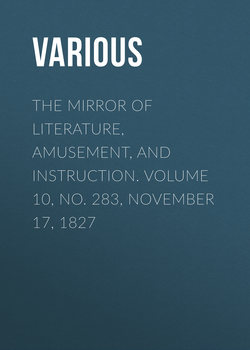Читать книгу The Mirror of Literature, Amusement, and Instruction. Volume 10, No. 283, November 17, 1827 - Various - Страница 3
BUNHILL FIELDS BURYING-GROUND
ОглавлениеThis extensive burial-place is part of the manor of Finsbury, or Fensbury, which is of great antiquity, as appears by its being a prebend of St. Paul's Cathedral in 1104. In the year 1315, it was granted by Robert de Baldock to the mayor and commonalty of London. Part of it was, in 1498, converted into a large field for the use of archers and other military citizens to exercise in. This is now called The Artillery Ground.
In the year 1665, that part of the ground now called Bunhill (originally Bonhill) Field, was set apart as a common cemetery, for the interment of such bodies as could not have room in their parochial burial-grounds in that dreadful year of pestilence. However, not being made use of on that occasion, a Mr. Tindal took a lease thereof, and converted it into a burial-place for the use of Dissenters. It was long called Tindal's Burial-place. Over the west gate of it was the following inscription:—"This church-yard was inclosed with a brick wall at the sole charges of the city of London, in the mayoralty of Sir John Lawrence, Knt., Anno Domini 1665; and afterwards the gates thereof were built and finished in the mayoralty of Sir Thomas Bloudworth, Knt., Anno Domini, 1666."
The fen or moor (in this neighbourhood), from whence the name Moorfields, reached from London-wall to Hoxton; the southern part of it, denominated Windmill Hill, began to be raised by above one-thousand cart-loads of human bones, brought from St. Paul's charnel-house in 1549, which being soon after covered with street dirt from the city, the ground became so elevated, that three windmills were erected on it; and the ground on the south side being also much raised, it obtained the name of The Upper Moorfield.
The first monumental inscription in Bunhill-fields is, Grace, daughter of T. Cloudesly, of Leeds. Feb. 1666.—Maitland's Hist. of London, p. 775.
Dr. Goodwin was buried there in 1679; Dr. Owen in 1683; and John Bunyan in 1688.
Park-place, Highbury Vale.
J. H. B.
